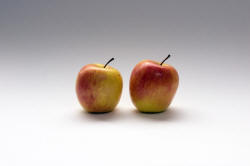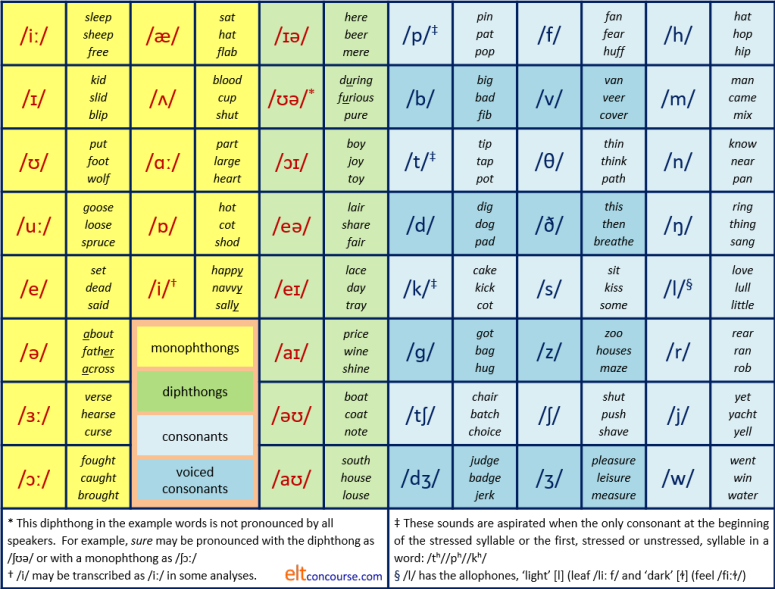What is a phoneme?
 |
| Oi! |
 |
The sounds of English: phonemes, allophones and minimal pairs |
In what follows, you will see that certain letters appear between
two diagonal lines, like this: /b/. The diagonal lines are the
conventional way to show that we are talking about the sound, not
the letter itself.
For example, the first letters of cinema and cave
are the same, a 'c', but the sound they represent is different.
In cinema, it is an /s/ and in cave it is a /k/
sound.
A phoneme is, essentially, a sound but the critical point is that it is a sound which carries meaning.
The first thing to be aware of is that we are talking about English sounds. The study of language sounds (phonemic analysis) is language specific.
- Phonemes:
-
In English, we make a difference between the words pat
and bat simply by changing the 'p' to a 'b' sound.
This is because the sounds /p/ and /b/ in English are phonemes.
Selecting one sound or another will make a difference to the
meaning of the noise you make when you say a word.
If you change a single sound in a word and make a new word, the sound you have changed is a phoneme in that language.
In other languages, most varieties of Arabic, for example, these two sounds are not phonemes and changing one to the other will not change the meaning of a word (but it might sound odd). - Allophones:
- Allophones are slightly different pronunciations of certain phonemes
which do not affect the meaning of what is said (although it may sound
odd). We saw above that /p/ and /b/ are allophones in most
varieties of Arabic as are, incidentally, /f/ and /v/ in some
varieties.
All languages have a number of allophones. For example, in English the sound /t/ can be pronounced with and without a following /h/ sound. Compare the sounds in track and tack.
If you hold a thin piece of paper in front of your mouth and say tack loudly, the paper will move.
If you do the same with the word track, the paper won't (or shouldn't) move (unless you shout).
In English, these two ways to say the letter 't' are not phonemes because you can change from one to the other without changing the meaning of the word.
In some languages, Mandarin, for example, the two ways to say 't' are separate phonemes and swapping them around will change the meaning of what you say. - Minimal pairs:
- Pairs of words which are distinguished only by a change in one
phoneme are called minimal pairs. For example, hit-hat,
kick-sick, fit-bit, sheep-ship, jerk-dirk, hot-cot, love-live
etc. are all distinguished in meaning by a single change to one
sound. That's in English, of course. It bears
repeating that what is an allophone in English may be a phoneme in
other languages and vice versa.
There is a list on this site of commonly used minimal pairs for classroom practice. Click here to get it.
 |
British English phonemes |
We are talking about one standard variety of English only here. Other standards, US, Caribbean, Australian etc., will have slightly different sets of phonemes. That is how accents are often recognised.
There are two fundamental sorts of phonemes in any language.
|
Consonants are made by blocking or partially blocking the air flow. |
Vowels are made by expelling air through you mouth with the tongue in various positions. |
If you read the lists above out loud, you have pronounced all the phonemes in English at least three times each.
Purely for your reference, here is a list of the representation
of all the phonemes in English with a few notes. Sooner or
later, you will have to learn to use the symbols.

If you want this chart as a PDF document,
click here.
The next section of the course is about consonants and after that we'll consider vowels.
 |
Learn more about: |
 |
Take a test |
To make sure you have understood so far, try
a very short test of your
knowledge of phonemes.
Use the 'Back' button to return when you have done that.
If you got that all right, it is safe to move on.
The next area to learn about is Consonants. Click here to go to that section.
